On March 25, the city of Venice celebrated its 1,600th anniversary, according to the tradition of being founded in 421 AD. Not an anniversary like any other, after the deep crisis that hit the city, which by now based not only its economy but its entire city life on tourist flows, during the 2020s. Economic crisis, social crisis, but a crisis that also led many of the residents to discover their city, free from the tourist masses, and brought an environmental rebalancing and a few dolphins swimming in the Grand Canal. This 1,600th year could be the year of a renaissance, come to think of it. After all, the government has not forgotten Venice and its specificity, guaranteeing 3.8 billion euros from the Recovery Plan specifically to the lagoon city. And what better time to leave behind three decades of growing tourist monoculture and depopulation than a global collapse of tourism, in a city where in 2019 only one in ten tourists were Italian and stayed for less than three nights on average?
Unfortunately, not everyone seems to think so. Starting with those who administer the city, Mayor Luigi Brugnaro, who has quite different plans for spending Recovery Plan funds. Little-known plans, since they still, despite the insistence of the opposition, have not been revealed in detail. Yet journalistic advances begin to speak volumes: a new cruise port, a station in Mestre, a 15,000-seat sports hall in Tessera (where the basketball team owned by the mayor would play). It seems unbelievable, but for the revitalization of a delicate city that has acultural attractiveness with few equals in the world, where the tourism sector employs a decidedly significant precentage of workers out of the total, where the cinema is jockeying to shoot one more film, it seems that the focus is not on reforms nor on cultural investments for revitalization, avoiding the ugliness of the recent past, but on new important tourist infrastructure.
Then again, the position of the administration (which, it should be remembered, won the elections by gathering votes outside the lagoon) has been clear for months: to wait for tourism to return, to wait for everything to go back to the way it was, more than before. The mayor used words and tones of disdain regarding different assumptions (“where are those who didn’t want tourists? Where did they go?” he said on Dec. 30, 2020), and actively acted to nip in the bud any activity that would make it possible to build an alternative. First by shutting down the Civic Museums, and with them any possibility of resident involvement. The story is well known by now: in December, the city-owned foundation that runs them announced that it would keep all the branches closed until April, putting all employees on layoff, resulting in the suspension of all activities, including those not aimed at the public. The reason? To save 620,000 euros, using the layoff paid with state funds, despite a budget in the black thanks to 8 million euros in aid received from MiBACT. But city protests forced the Fondazione Musei Civici in February to reopen the museums for a few days, finding a very long queue of Venetians and Venetians at the gates to disprove the idea that culture only interested tourists. Then they closed again anyway, finding two hundred people on the field on February 27 demonstrating against this cultural management and the museum lockout. In early March, the museums reopened for two days following a question in the city council that had embarrassed the Foundation.
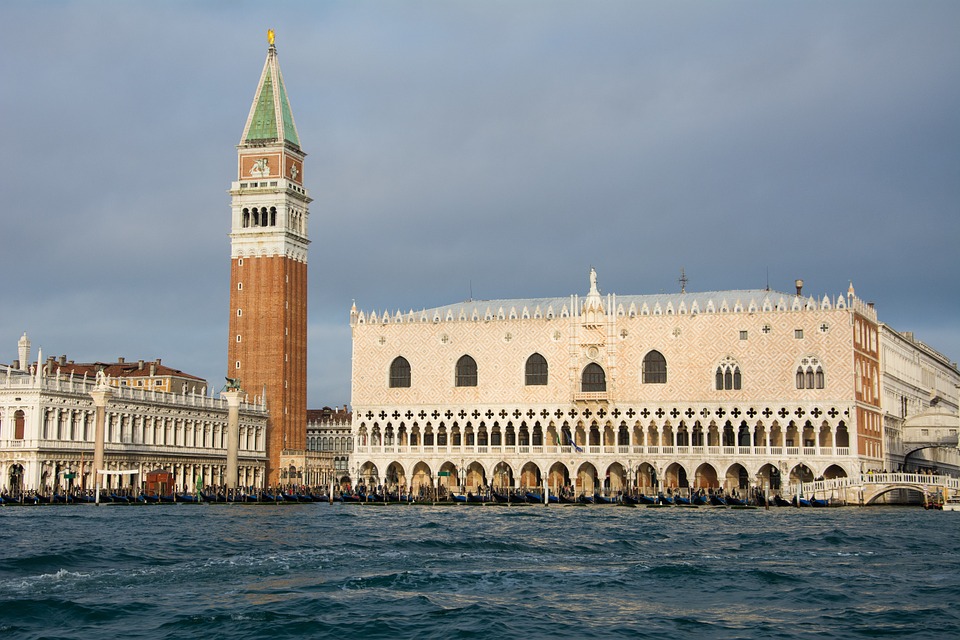 |
| Venice, Doge’s Palace, one of the venues of the civic museums |
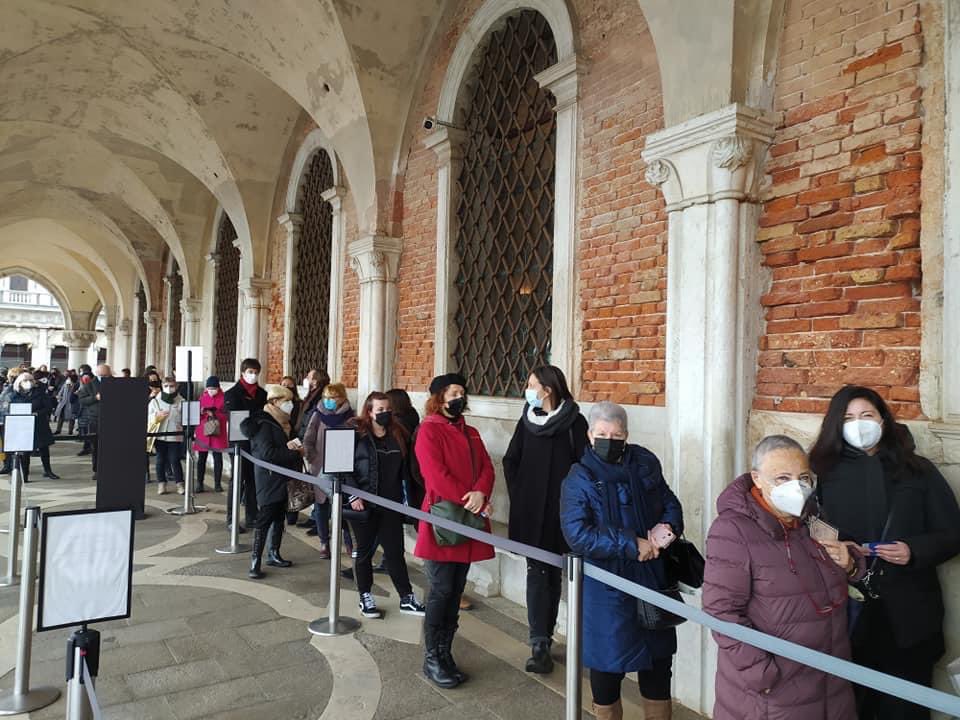 |
| Queues to enter the Doge’s Palace on reopening days |
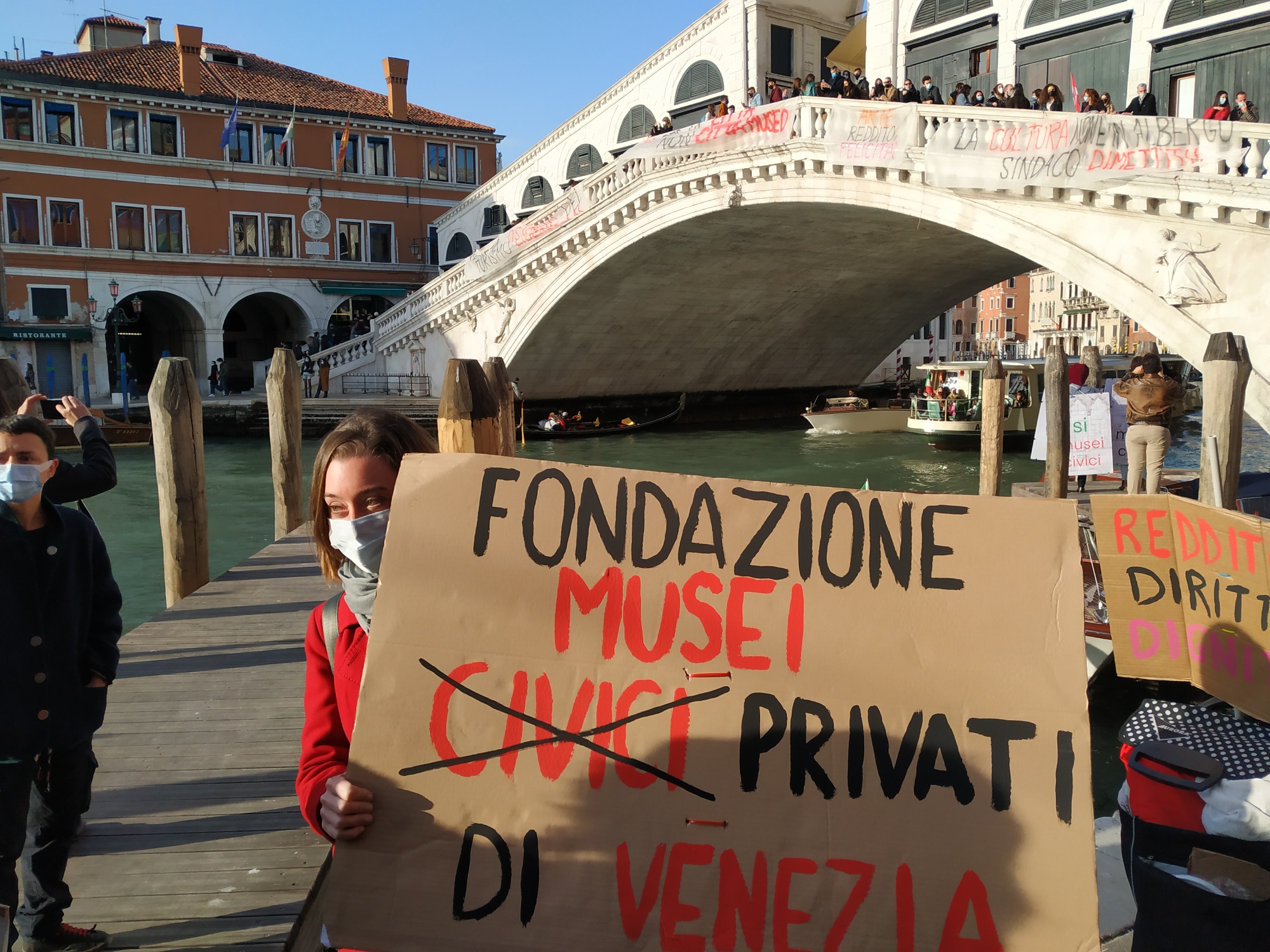 |
| The demonstration for the reopening of the Venice Civic Museums. |
Secondly, the desire not to reverse any trend was confirmed by the administrative decision not to put any obstacle in the way of the sale of the Casa dei Tre Oci, a masterpiece of the Venetian twentieth century located on the Giudecca, and home in recent years to photographic exhibitions. It was owned by a banking foundation, the Venice Foundation, and will go into the hands of the American Berggruen Institute, which will make it its first European headquarters. It is an important sale not only because of the value of the place and because of yet another cultural garrison that the city is in danger of losing (many in the city remember the ease of changes of use that could result in yet another hotel), but because of the context in which it takes place. The Venice Foundation, in fact, sold it to make up for losses related to another failed "cultural speculation" operation, that of the M9 district in Mestre.
M9 is a museum without a collection opened in 2018 and wanted by the Venice Foundation as the centerpiece of a new multipurpose space in downtown Mestre. An area that was largely publicly owned, and that the Foundation acquired from 2007 onward to create a district that presents itself as a “cultural hub,” but in which in reality about 70 percent of the spaces have a commercial purpose. In short, the museum is off to a terrible start, counting less than half the expected visitors in 2019, a year when tourism was more prosperous than ever, and 2020 puts an end to dreams of achieving a museum that would guarantee a balanced budget, thanks to the absence of a collection, low-cost exhibitions and labor, and substantially priced tickets. By May 2020, the Foundation’s debt was nearing 7 million euros, in large part due to M9’s abysmal management, and the sale of the biggest jewel: the Casa dei Tre Oci was on the way. At the first journalistic indiscretions the mayor and the Foundation rose up. Emanuela Bassetti, a member of the Fondazione di Venezia’s general council, declared on May 12 that she could “exclude with absolute determination any hypothesis of the sale of the Three Oci by the Fondazione. Any reasoning in this regard is therefore without foundation.” In December the sale became official, and by February 2020 the sale was a done deal. And it is to be hoped that this will be enough, since the museum does not hint at reopening and the entire M9 district, in its cultural part, seems destined to see a change of management, perhaps as classrooms: a gimmick to help the Foundation’s budgets.
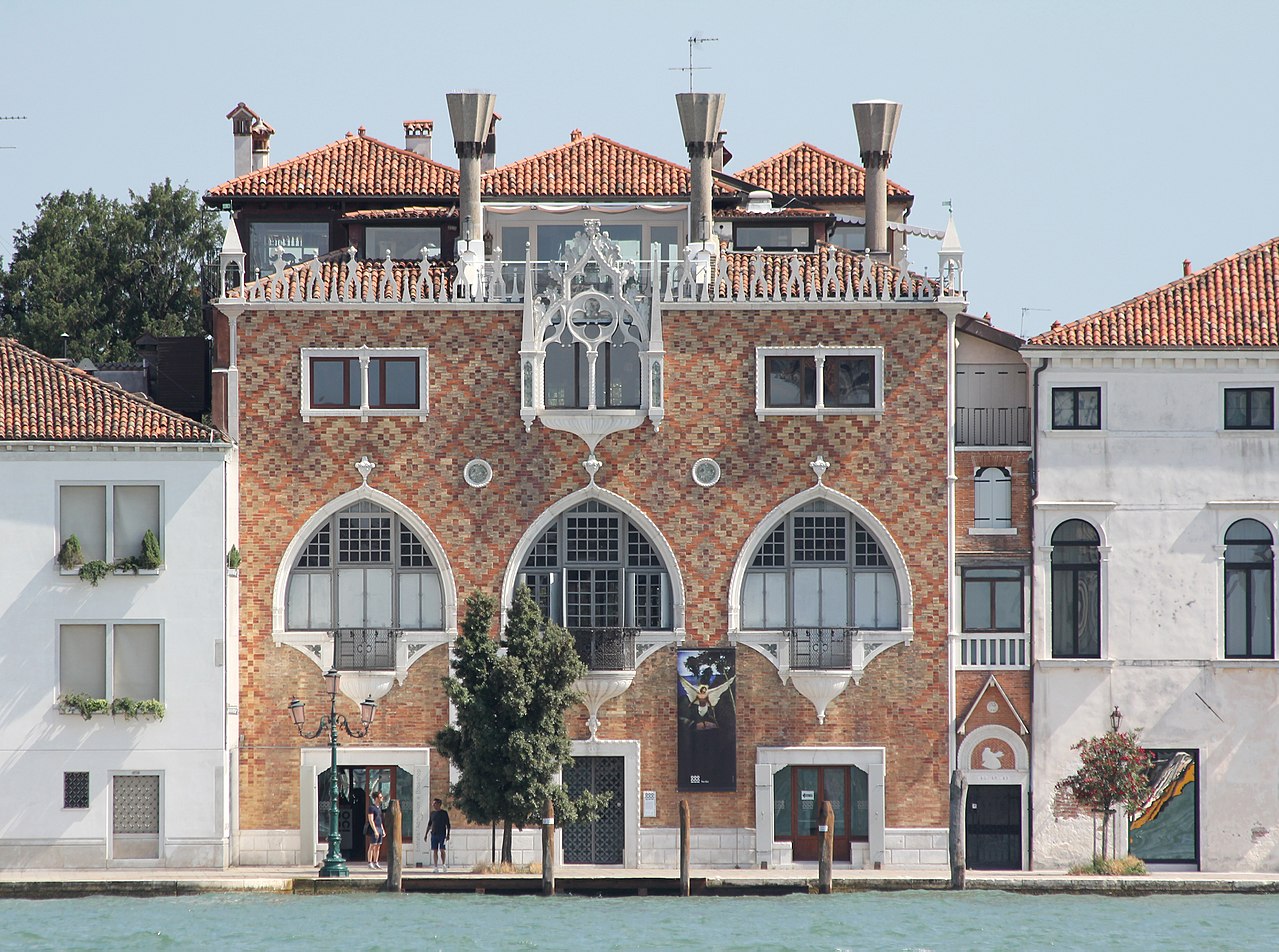 |
| The House of the Three Oci |
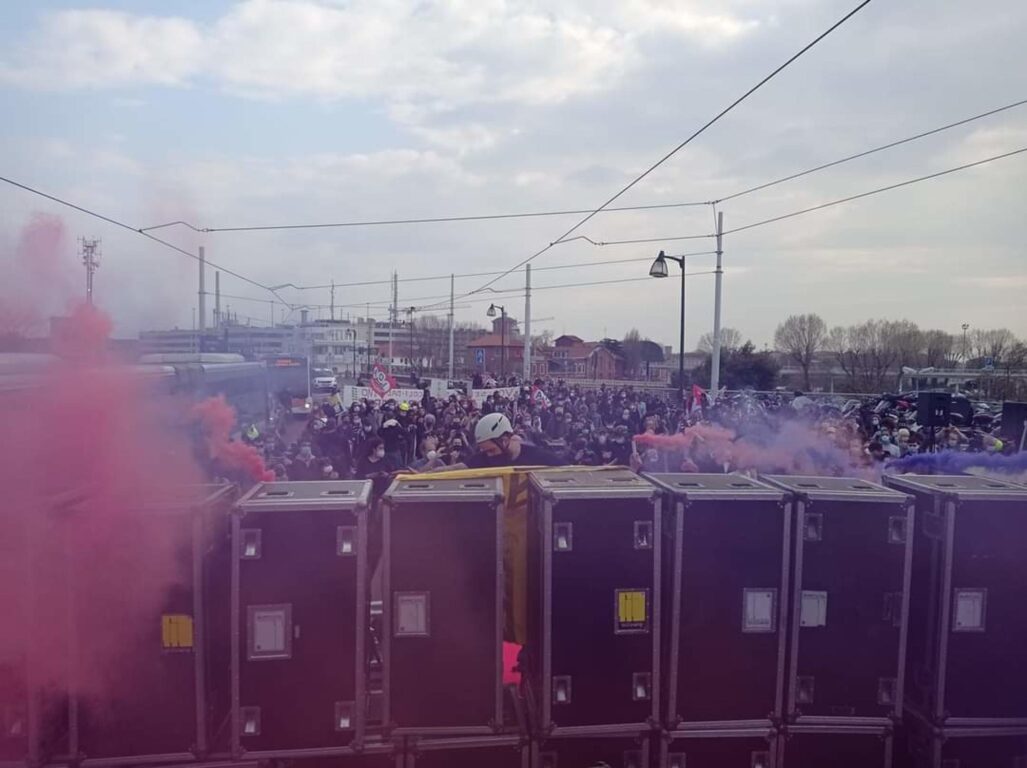 |
| The occupation of the Ponte della Libertà by entertainment workers. |
These are symptoms of a collapsing cultural system, or rather city cultural sector, in which, after decades of speculation on labor costs and mass tourism, there is a general stampede. Every foundation tries to grab public funds to self-protect itself, closing in on itself, leaving the citizenry at the gates, like a castle. And the funds come, just think of the 20 million euros provided by the ex-MiBACT to expand the Biennale’s spaces: as always, funds not tied to the employment of good jobs and inclusive projects for the citizenry. A sector, a plethora of different realities, that has never been systematized, including universities, foundations, permanent theaters, civic museums, state museums, and dozens and hundreds of companies that work with and for tourism before for the city. But as both the demonstrations and the queues at museum doors in February have shown, there is ferment in the lagoon: few want to return to the world of before. And proposals are hovering that in other parts of Italy are not even on the agenda: the return of civic museums to public management. The red zone has given some breathing space to Foundations and Administration, which, even though it has been forced to stonewall against oppositions demanding to share plans for the Recovery Plan. But the mobilizations do not stop. A few days ago City Councilwoman Monica Sambo, among the most active on the issue, returned to ask why libraries managed by the Civic Museums Foundation do not offer remote services like other city libraries. Then on March 27, 300 entertainment workers symbolically blocked the Liberty Bridge for a revitalization of the sector in the city, which is parceled out and managed by saving on labor despite its enormous potential: they demanded the activation of a continuity income and the creation of an inter-ministerial table (not only culture, but also labor and economic development) in order to plan a restart of the sector, overcoming the scheme of occasional subsidies.
So far, however, no response. Entertainment is at a standstill, civic museums are at a standstill. Indeed, they are reopening as vaccination centers: or rather, the least profitable ones are being used as vaccination centers, such as the Glass Museum in Murano, which moreover would force those who need to vaccinate to take a vaporetto. And Venice, amidst reformist thrusts and embeddings, sees its future passing into those 3.8 billion: social, cultural, economic, urbanistic.
Warning: the translation into English of the original Italian article was created using automatic tools. We undertake to review all articles, but we do not guarantee the total absence of inaccuracies in the translation due to the program. You can find the original by clicking on the ITA button. If you find any mistake,please contact us.